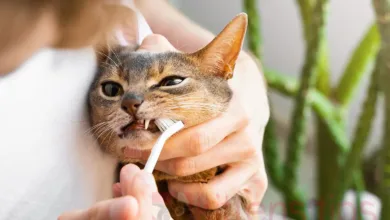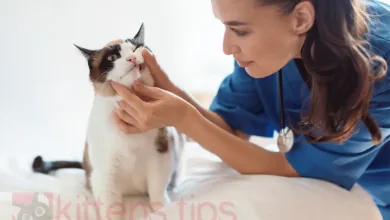
Dental Resorption in Cats
Dental resorption in cats, also known as tooth resorption or odontoclastic lesions, is a common and progressive condition that affects the enamel and dentin of teeth (hard tissue that makes up the majority of the tooth). This issue can affect both young and older cats and may lead to tooth loss.
Although a prevalent problem in cats, affecting between 30% and 60% of the population, the exact causes of dental resorption in cats are not fully understood despite extensive research. Genetic factors, infections, chronic inflammation, and individual predispositions may play a significant role in the development of this condition.
It is believed that an inflammatory reaction in the gums and teeth may contribute to triggering the process leading to dental resorption in cats.
Table of Contents
Types of Dental Resorption in Cats
There are two distinct types of dental resorption in cats:
Crown Resorption
This type of resorption involves the destruction of the tooth crown and often manifests as a visible defect on the tooth surface. In these situations, the root remains relatively normal, and the periodontal ligament is visible on X-rays. In some cases, a crown fracture may be present, with the root remaining in the bone.
Root Resorption
Root resorption involves lesions at the root level of the tooth. X-rays reveal root migration into the bone and is sometimes referred to as replacement root resorption. This phenomenon can affect the supporting structure of the tooth and can have consequences for dental stability and the cat’s oral health.
Symptoms of Dental Resorption in Cats
Sensitivity to touch. Cats may exhibit increased sensitivity in the mouth and react negatively to touch.
Difficulty eating. Chewing can become painful, and cats may develop food preferences, avoiding dry food or preferring soft food.
Excessive salivation. Dental resorption can trigger excessive salivation, and cats may have drooling.
Fragile teeth or dental fractures. Affected teeth can become fragile and may suffer fractures, with owners noticing tooth fragments in the cat’s saliva.
Unpleasant breath odor. Infections associated with dental resorption can contribute to the onset of unpleasant breath odor (halitosis).
Diagnosis and Treatment
Diagnosing dental resorption in cats requires a thorough dental examination conducted by a veterinarian. X-rays may be used to assess the condition of the teeth beneath the gums.
Related: Why does a cat’s mouth smells bad? Causes and Treatment.
Regarding treatment, it depends on the stage of the condition. In the early stages, conservative treatments such as tartar removal and application of dental gels may be attempted.
In more advanced cases, when dental resorption has progressed and causes pain and discomfort, extraction of affected teeth may be necessary. Removing affected teeth in cats can alleviate suffering and improve the quality of life.


